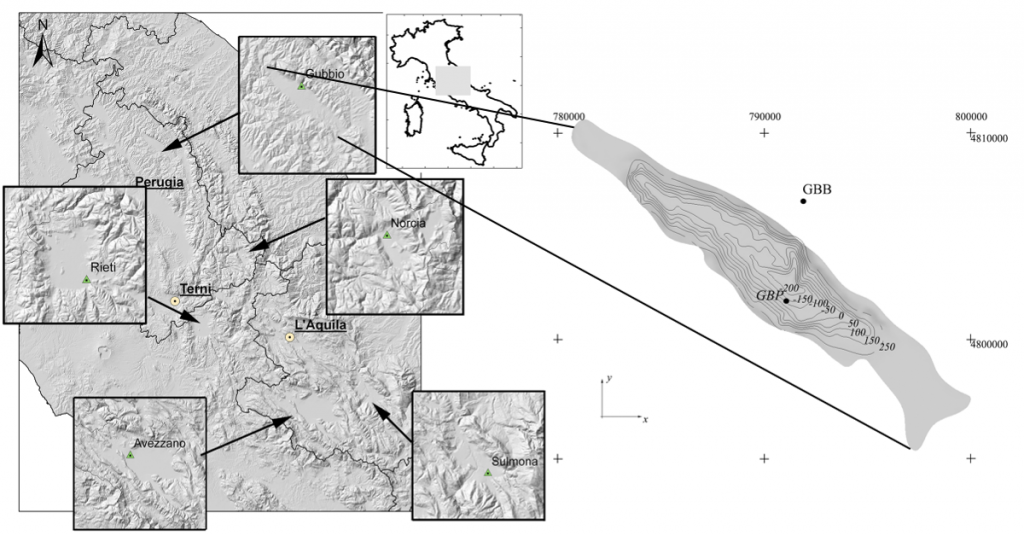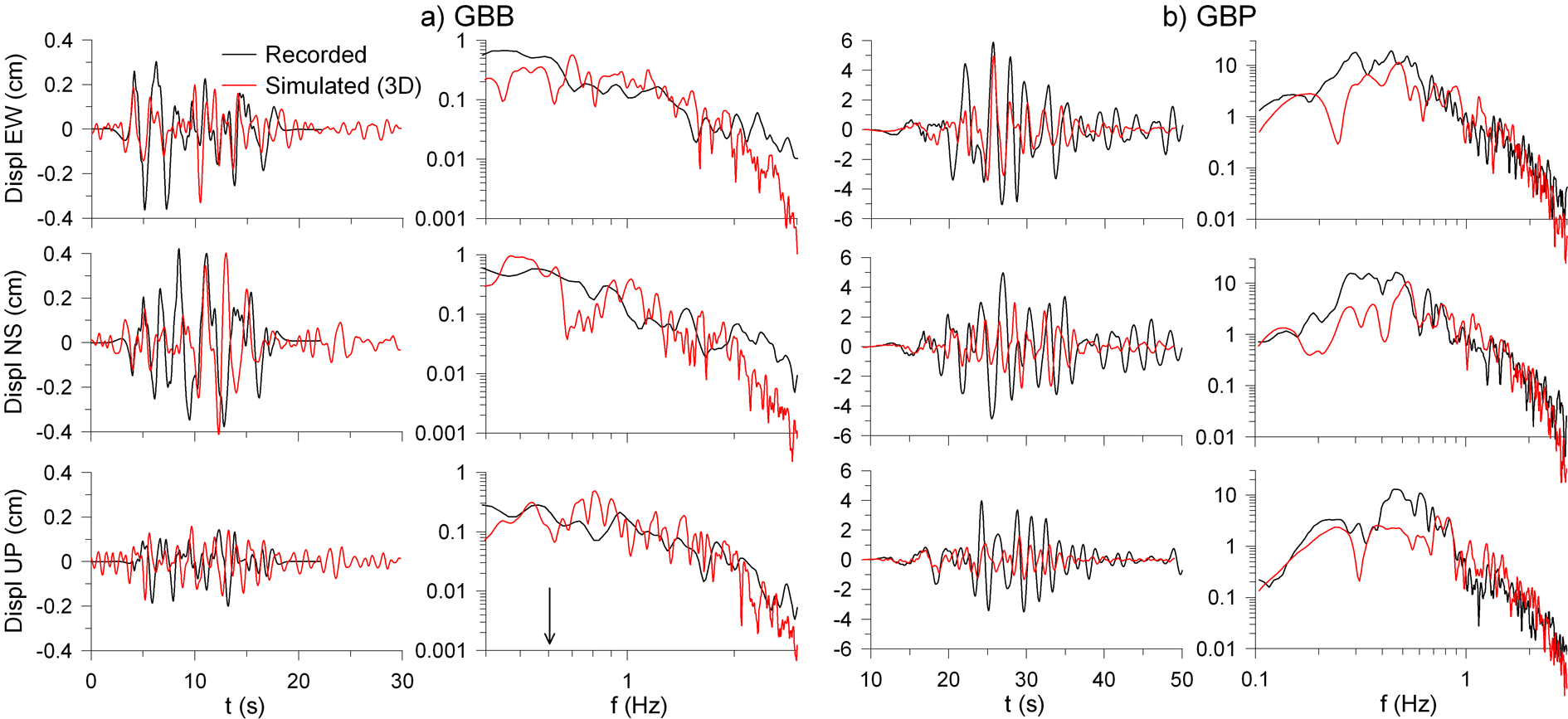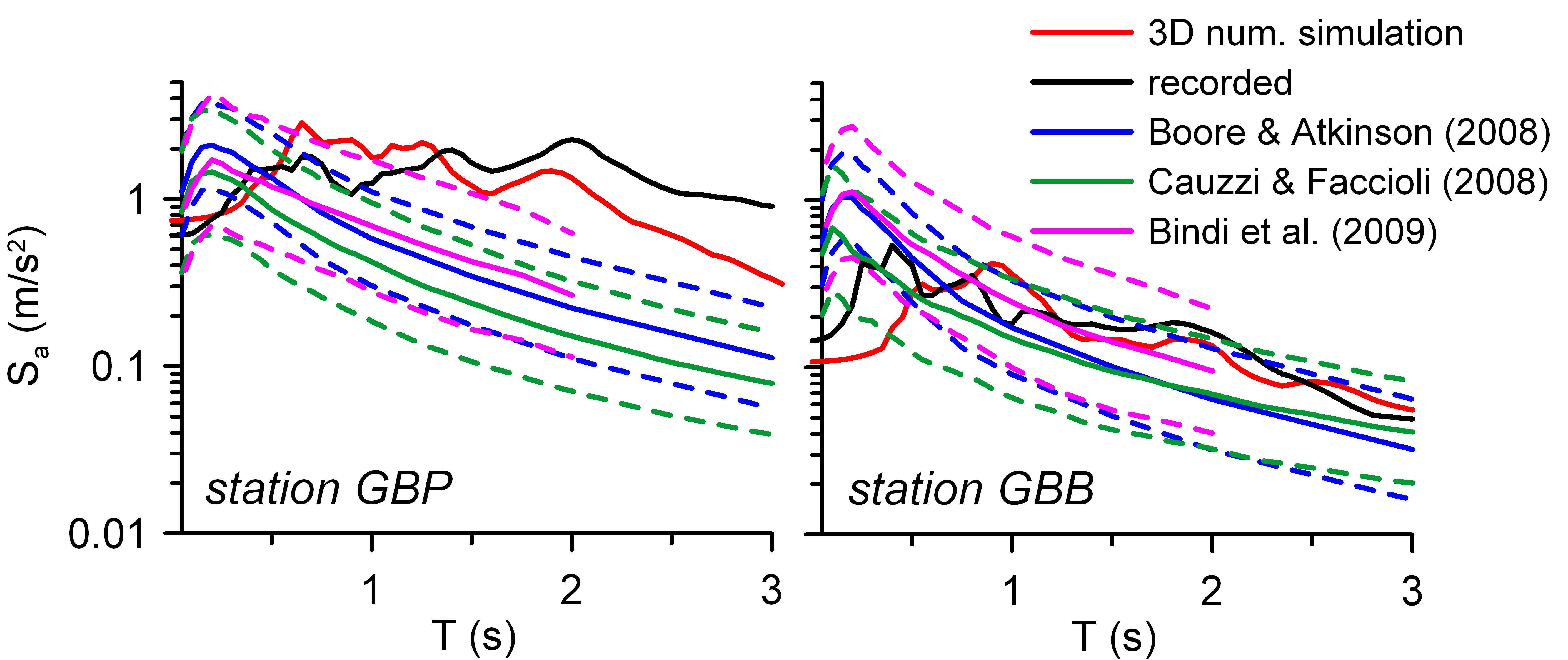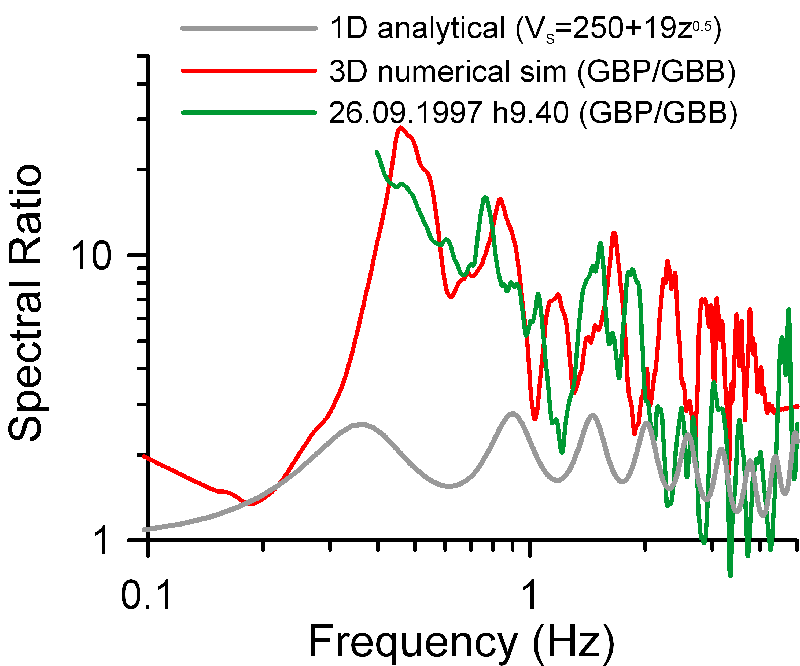Smerzini, C., R. Paolucci, and M. Stupazzini (2011), Comparison of 3D, 2D and 1D numerical approaches to predict long period earthquake ground motion in the Gubbio plain, Central Italy. Bull. Earthq. Eng., Vol. 9, pp 2007-2029
Geological dataset
Gubbio is one of the numerous intramountain basins located in the Central Appennines, a region of extending continental crust within the zone of convergence between the Eurasian and African Plates characterized by mainly SW-dipping and normal-oblique faults. In this work we studied the performance of different numerical approaches to simulate the large amplifications of long period earthquake ground motion within the Gubbio plain, a closed-shape intra-mountain alluvial basin of extensional tectonic origin in Central Italy, observed during the Umbria-Marche 1997 seismic sequence.
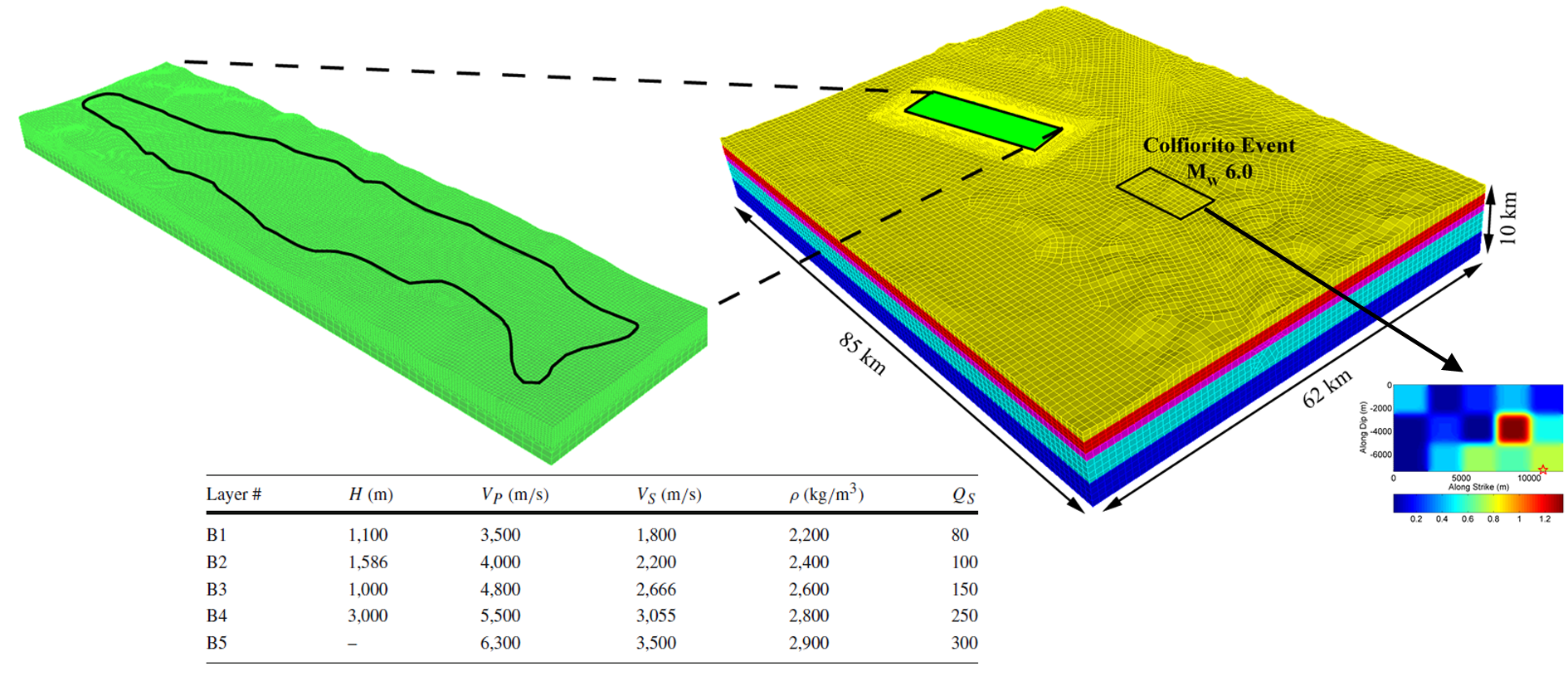
3D hexahedral spectral element mesh adopted for the simulation of the seismic response of the Gubbio basin during the Mw 6.0 Colfiorito earthquake on Sept 26 1997 h9.40. The kinematic model (right bottom, Hernandez et al. 2004) together with the layered crustal model (left bottom, adapted from Hernandez et al. 2004 and Mirabella et al. 2004) are also shown.
Numerical Model
The 3D numerical model was constructed by combining the following features: (a) the kinematic seismic source model proposed by Hernandez et al. (2004); (b) the 3D model of the Gubbio alluvial basin shown before (c) a layered deep crustal model; (d) an hexahedral unstructured numerical mesh including both the Gubbio plain and the causative fault; (e) a linear visco-elastic material behaviour with a Q factor proportional to frequency.
Numerical Results
Comparison with records
The simulated displacement and velocity time histories and the corresponding Fourier amplitude spectra at GBB, located on gravel breccias at the eastern edge of the basin (left hand side), and at GBP, within the Gubbio plain (right hand side) are compared with the strong motion observations.These comparisons show that there is a reasonable agreement both in time and frequency between simulations and observations, considering the relatively rough modelling of both the source and the propagation path.
Comparison with ground motion attenuation relastionships
Acceleration response spectra at 5% damping at GBP (left) and GBB (right): comparison of the numerical simulation (red line) with the recordings (black line) and the spectral ordinates as predicted by Boore & Atkinson (2007), Cauzzi & Faccioli (2008) and Bindi et al. (2009).
1D versus 3D numerical simulations
The numerical results clearly point to the need of realistic 3D numerical modelling to predict the combined effects of radiation pattern, propagation path in irregular geological structures and complex site effects, that may be strongly underestimated or neglected at all by numerical approaches based on 1D wave propagation theory.
References
Bindi D., Parolai S., Cara F., Di Giulio G., Ferretti G., Luzi L., Monachesi G., Pacor F., Rovelli A. (2009). Site amplification observed in the Gubbio basin, Central Italy: hints for lateral propagation effects. Bull. Seismol. Soc. Am. 99(2A):741–760.
Boore, D. M. and G. M. Atkinson (2007). Boore-Atkinson NGA Ground Motion Relations for the Geometric Mean Horizontal Component of Peak and Spectral Ground Motion Parameters, PEER Report 2007/01, Pacific Earthquake Engineering Research Center, University of California, Berkeley, 234 pp.
Cauzzi C., Faccioli E. (2008). Broadband (0.05 to 20 s) prediction of displacement response spectra based on worldwide digital records. J Seismol 12:453–475.
Hernandez B., Cocco M., Cotton F., Stramondo S., Scotti O., Courboulex F., Campillo M., Campillo F. (2004). Rupture history of the 1997 Umbria-Marche (Central Italy) main shocks from the inversion of GPS, DInSAR and near field strong motion data. Ann. Geophys. 47:1355–1376.
Mirabella F., Ciaccio M.G., Barchi M.R., Merlini S. (2004). The Gubbio normal fault (Central Italy): geometry, displacement distribution and tectonic evolution. J. Struct. Geol. 26:2233–2249.

